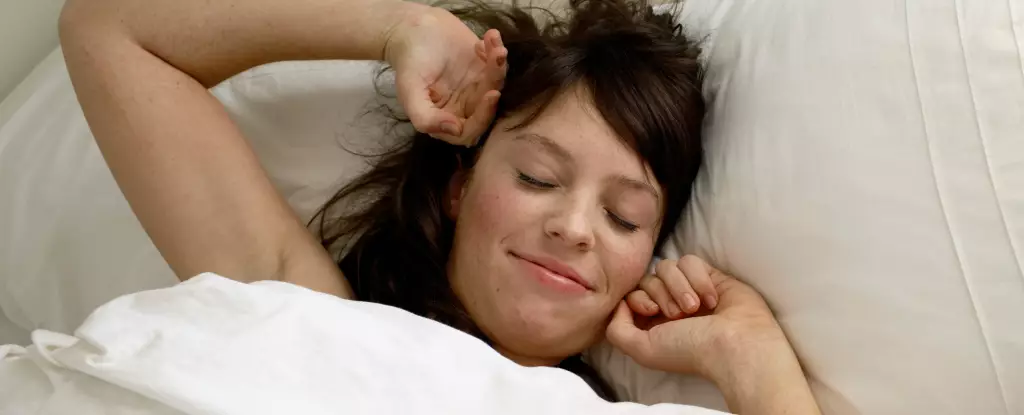Many great thinkers throughout history have underscored the paradox of sleep – a time when we are seemingly inactive yet might be most productive. Noted writer John Steinbeck once said, “It is a common experience that a problem difficult at night is resolved in the morning after the committee of sleep has worked on it.” This intriguing notion is supported by scientific studies suggesting that our minds continue to work on complex tasks during rest. As research into sleep continues to unfold, it reveals that slumber is not merely a period of inactivity but rather a profound state where cognitive processing and creativity are heightened.
Recent investigations illuminate how sleep contributes to better decision-making and problem-solving capabilities. A pivotal study conducted in 2024 by Duke University explored this phenomenon through a ‘garage-sale game’ designed to gauge participants’ decision-making strategies. When tasked with selecting a box filled with goods based solely on initial impressions, participants often made suboptimal decisions. However, those who made their choices after a night’s sleep demonstrated a clearer understanding of the overall value of the items, indicating that sleep aids in processing information and reducing biases that cloud judgment.
The power of sleep extends beyond mere decision-making; it plays a pivotal role in facilitating insights and uncovering associations. A 2023 study focused on this relationship amplified the argument for sleep as a means of enhancing cognitive connections. Participants trained to associate various items with a scenario displayed a marked improvement in recognizing subtle linkages after a night’s rest. From this, we learn that sleep serves as a mental workshop where previous experiences integrate to form new understandings.
Furthermore, sleep can enhance our problem-solving abilities through specific cueing techniques. A study in 2019 investigated how auditory cues during sleep reinforce problem-solving capacity. Participants who tackled puzzles were later exposed to associated sounds while they slept. Remarkably, those who heard sounds linked to their unresolved tasks were able to solve them more effectively upon waking. This suggests that a well-timed auditory reminder can help the brain to continue its work long after we have awoken.
The connection between sleep and creativity has captured the fascination of countless innovators, including Thomas Edison. Often regarded as one of the greatest inventors of the modern era, Edison would deliberately take short naps to usher in bursts of creativity despite claiming to sleep very little at night. His unique approach involved holding a ball in his hand, which would fall and wake him as he drifted into slumber. Edison’s method hints at the peculiar state of hypnagogia – a transitional phase between wakefulness and sleep where vivid imagery often takes hold.
A contemporary study demonstrated this curious state of mind can indeed promote creative problem-solving. Participants tasked with solving a complex maths problem experienced an increased rate of uncovering hidden rules when they allowed themselves to enter light sleep. This finding bolsters the notion that the boundary between consciousness and slumber, or what we refer to as the “twilight” state, is rich with cognitive potential that can rejuvenate problem-solving techniques.
More compelling evidence arises when we examine the relationship between hypnagogia and specific creative tasks. Researchers in 2023 aimed to identify any cognitive ties between sleep imagery and the nature of problems tackled before sleep. They unearthed a fascinating conclusion: engaging in creative thinking about trees while awake imbued participants with enhanced capabilities to solve related problems influenced by tree imagery during their hypnagogic experiences. This raises the exciting prospect that what we contemplate prior to slumber can shape the very fabric of our creative resolutions.
As science continues to reveal the intricate workings of our minds during sleep, it’s essential for individuals to recognize the value of rest not only as a recuperative measure but also as a powerful tool for enhancing creativity and analytical reasoning. Prioritizing restful sleep, embracing strategic napping, or allowing for moments of daydreaming may unlock profound insights into our challenges.
In a world where we often dismiss the importance of slumber in favor of relentless productivity, this growing body of research compels us to reconsider how we approach problem-solving. By harnessing the quiet power of sleep, we can invite new ideas, overcome cognitive hurdles, and emerge rejuvenated with fresh perspectives on the challenges that once seemed insurmountable. Sleep is more than a biological necessity; it’s an invaluable ally in the pursuit of innovation and understanding.

Leave a Reply